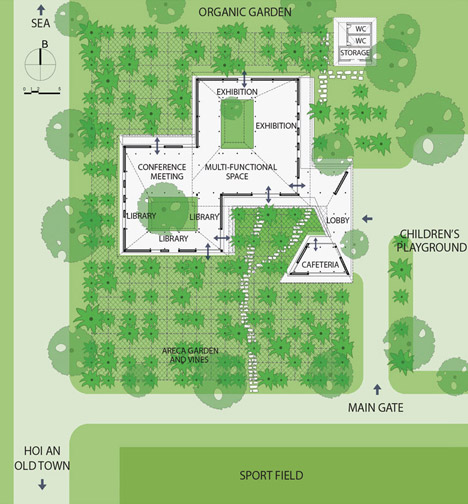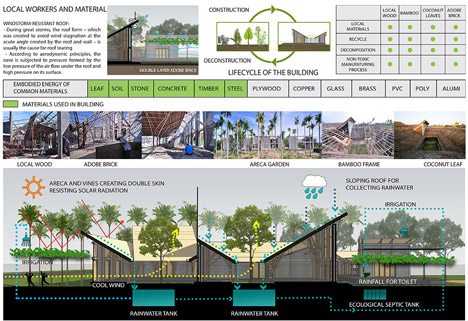Cam Thanh Community House in Vietnam features thatched roofing and secluded courtyards
This Vietnam community centre by architecture studio 1+2>3 features bamboo roofs thatched with coconut leaves, which pitch inwards to direct rainwater towards a series of planted courtyards (+ slideshow).
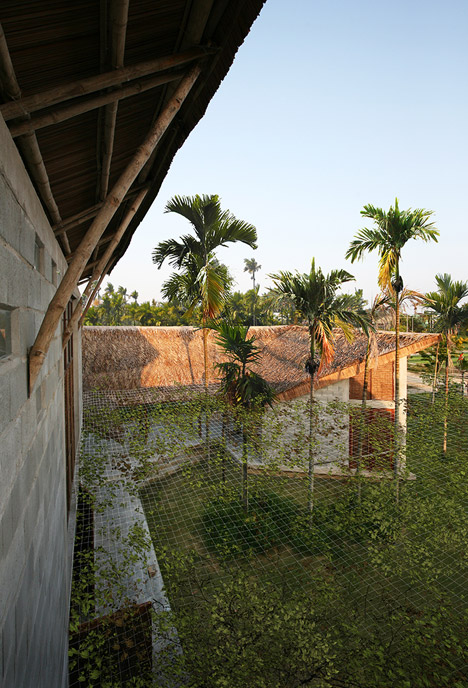
The Hanoi-based practice built the community centre in Cam Thanh, an area to the south-east of Hoi An – an old trading port on the South China Sea.
Hoi An has a UNESCO-protected city centre and a picturesque coastline, making it a popular tourist destination. But the more rural area of Cam Thanh comprises a series of small villages set among mangrove and coconut forests and crisscrossing waterways, and is regularly affected by heat waves and typhoons.
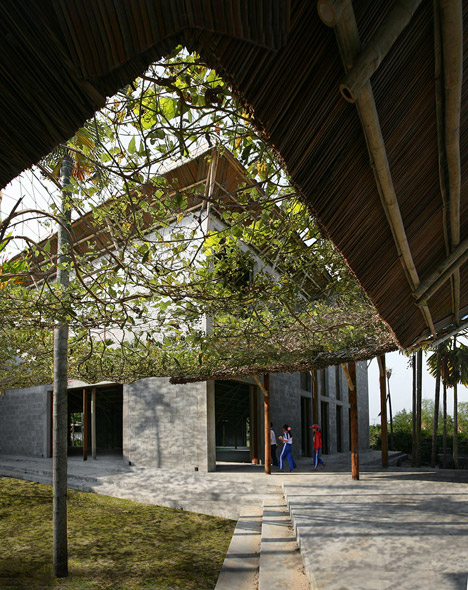
"Despite having such great potential, due to naturally diverse ecology and local handicraft businesses, Cam Thanh remains a poor area with low living standards," said the architects.
"The lack of connection between Cam Thanh and the old quarter – the centre attracting both domestic and foreign tourists – has made it difficult to promote tourism and foster the local economy."
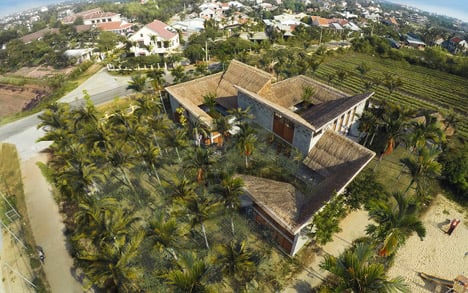
Cam Thanh Community House was designed to provide a hub for the local neighbourhood, but it is hoped that in future it will also serve as an information centre for tourists enticed away from the historic old town and into the countryside.
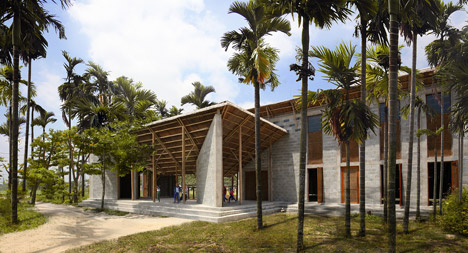
The centre comprises a cluster of buildings separated by flexible partitions, allowing the space to be adapted for different kinds of meetings, exhibitions and events.
It also provides more permanent services for the community, including a library and a cafeteria.
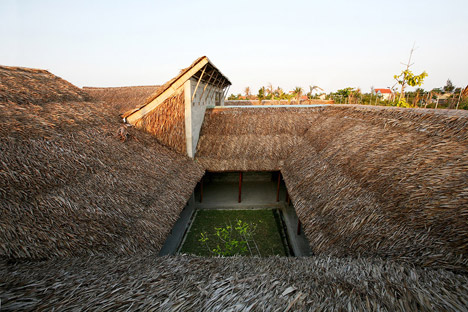
Wooden columns and a network of bamboo canes supports sloping coconut-thatched roofs, which pitch towards the centre of the site to divert rainwater into harvesting pools. This recycled water is used to irrigate the centre's gardens, as well as for toilet flushing.
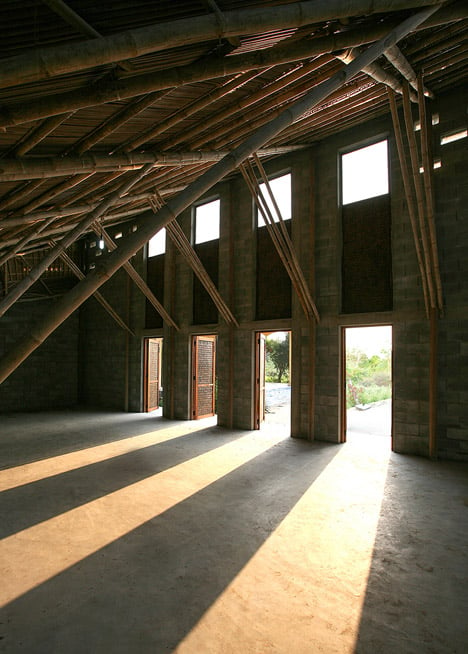
The courtyards help to ventilate the complex – a feature influenced by the region's traditional courtyard houses.
"The open courts resemble the Hoi An's ancient quarter houses, using convection ventilation," explained the architects.
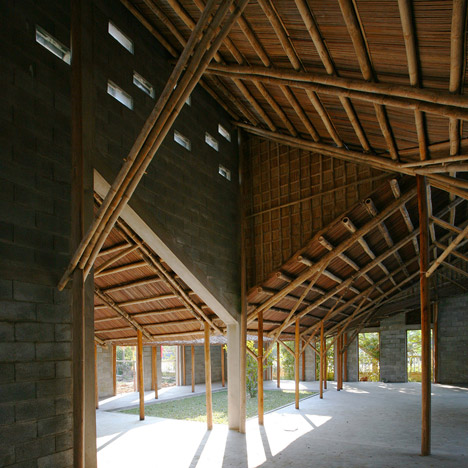
The walls are made from a double layer of adobe brick – a type of brick that is sun-dried rather than heated in a kiln – creating an insulating air cushion around the building.
These robust walls are also designed to help the building withstand the force of the region's winds.
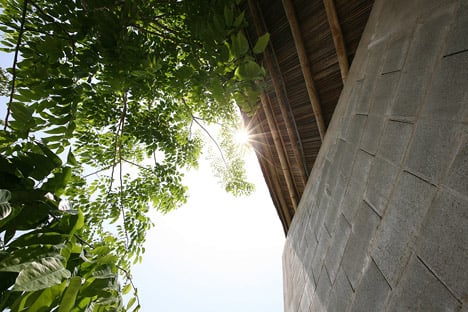
Lush green gardens planted with rows of areca trees – a species of palm found in tropical areas – surround the centre. There is also a playground, a vegetable plot, and a sports field.
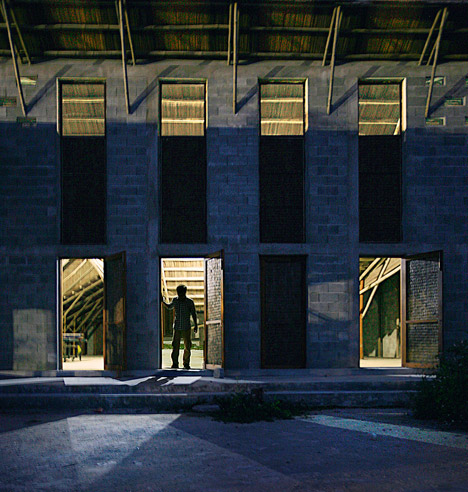
Vines hang across an expanse of netting strung between the trees to shelter the outdoor areas, while coconut leaf roofs and high-level windows are intended to provide further relief from the sun.
Photography is by Hoang Thuc Hao and Vu Xuan Son.
Project credits:
Architecture: 1+2>3
Architects in charge: Hoang Thuc Hao, Pham Duc Trung, Nguyen Thi Minh Thuy, Le Dinh Hung, Vu Xuan Son
